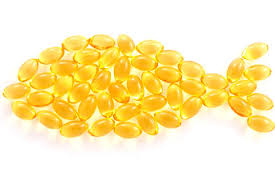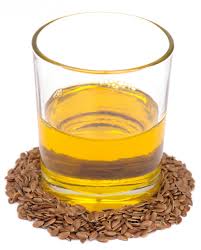HOW ABOUT SOME HEALTHY OILING :-)
 The choice of the right cooking oil goes beyond getting healthy oils, but also choosing oils that stay healthy after being cooked. When cooking, some oils tend to oxidize by reacting with oxygen, forming harmful compounds. In determining the resistance of oil to oxidation and rancidification, the relative degree of saturation of fatty acids is critical. Saturated fats only have single bonds, monounsaturated have one double bond while polyunsaturated fats have two or more double bonds. Double bonds are chemically reactive and sensitive to heat. In cooking, oils that are high in polyunsaturated fats should thus be avoided. Lets have a look at some popular cooking oils
The choice of the right cooking oil goes beyond getting healthy oils, but also choosing oils that stay healthy after being cooked. When cooking, some oils tend to oxidize by reacting with oxygen, forming harmful compounds. In determining the resistance of oil to oxidation and rancidification, the relative degree of saturation of fatty acids is critical. Saturated fats only have single bonds, monounsaturated have one double bond while polyunsaturated fats have two or more double bonds. Double bonds are chemically reactive and sensitive to heat. In cooking, oils that are high in polyunsaturated fats should thus be avoided. Lets have a look at some popular cooking oils
Butter
Butter has been falsely accused in the past as being unhealthy but according to facts, it is actually processed margarine that is unhealthy. Butter is safe and actually has health benefits. It contains vitamins A, E and K2. It also contains Conjugated Linoleic Acid (CLA) and Butyrate which are very healthy fatty acids. CLA helps in reducing body fats while Butyrate fights inflammation. Butter from grass-fed cows is better than that from grain-fed cows. It contains more vitamin K2 and CLA
Fatty Acid Breakdown:
- Saturated: 68%.
- Monounsaturated: 28%.
- Polyunsaturated: 4%.
Regular butter contains some sugar and protein that make it burn during high heat cooking. It is therefore necessary to clarify butter to avoid the burning. Here is how to clarify butter at home!
Olive oil
Olive oil is praised for its amazing effects on the heart. It is said to be the key behind the success of the Mediterranean diet. As just part of the magic, olive oil raises HDL cholesterol and lowers the amount of oxidized LDL cholesterol in the bloodstream.
Fatty Acid Breakdown:
- Saturated: 92%.
- Monounsaturated: 6%.
- Polyunsaturated: 1.6%.
According to studies done, olive oil is resistant to heat despite having fatty acids with double bonds. Extra Virgin Olive Oil has more nutrients and antioxidants than its refined form and still tastes better! To prevent its rancidity, it is advisable to keep olive oil cool, dry and in a dark place.
Avocado oil
Despite the expectations, avocado oil has similar fatty acid composition to olive oil. It is slowly gaining popularity due to its high smoke point thus making it great for sautéing and stir-frying. It is primarily monounsaturated with some percentage of saturated and polyunsaturated fats. It can be used for the same purposes as olive oil and can be cooked or used cold. It is can be stored away from heat and light for up to one year and is high in vitamin E.
Flax oil
Flax oil has high amounts of the plant form of Omega-3, Alpha Linolenic Acid (ALA). It is commonly used as a supplement for Omega-3 fats. Flax oil is not recommended for cooking due to its high concentration of polyunsaturated fats. Evidence also shows that the human body does not convert ALA to EPA and DHA efficiently
Seed and Vegetable oils.
Many nutrition professionals and the media have for decades considered seed and vegetable oils as the healthiest choices….but is this true? New researches have linked these oils to serious diseases including heart disease and cancer. They also contain very high levels of Omega-6-fatty acids thus the increased risk of heart diseases. Please! Read labels and compare them with the FDA standards.
Canola oil
The fatty acid breakdown of canola oil is relatively good. Most of the fatty acids are monounsaturated and also contains an Omega-6 and Omega-3 ratio of 2:1, which is very healthy. The down-side is the fact that Canola oils undergo a very harsh kind of processing. It involves the use of hexane….making it…..not so cool for human consumption.
Fish oil
 This oil is very rich in the animal form of Omega-3 fatty acids…which are DHA (docosahexaenoic acid) and EPA (eicosapentaenoic acid). One tablespoon of this oil is enough to satisfy your daily recommendations of this essential fatty acids. Cod fish liver oil is the healthiest and contains vitamin D3, which is deficient in most people globally. Fish oil should however not be used for cooking because of the high amounts of polyunsaturated fatty acids.
This oil is very rich in the animal form of Omega-3 fatty acids…which are DHA (docosahexaenoic acid) and EPA (eicosapentaenoic acid). One tablespoon of this oil is enough to satisfy your daily recommendations of this essential fatty acids. Cod fish liver oil is the healthiest and contains vitamin D3, which is deficient in most people globally. Fish oil should however not be used for cooking because of the high amounts of polyunsaturated fatty acids.
Coconut oil
Regarding high heat cooking, coconut oil is the healthiest…THE BEST. Thanks to its transcendent flavor and plethora health benefits it has become a MUST HAVE. Over 90% of coconut oil is saturated thus making it the most resistant to heat. Coconut oil is semi solid at room temperature and can go for years without going rancid. Among many other health benefits, it contains Lauric acid which improves cholesterol. It can also boost metabolism and increases the feeling of satiety as compared to any other fat.
Though invisible in food, cooking oil is a very crucial part of the food’s nutrient supply. It is therefore important to make informed choices. Ensure you carefully read labels. It is easy to be healthy it just takes some effort…making it a little bit…not easy 🙂 🙂









Excellent post and thank you for the butter and coconut oil section especially. I’d much rather have something natural than all the chemical additives and dyes (and fake sugars )that get added in. God’s diet plan trumps man’s plan every time! Blessings,
LikeLiked by 1 person
very true Ellie, God’s diet plan is the best! #natual!!
LikeLike